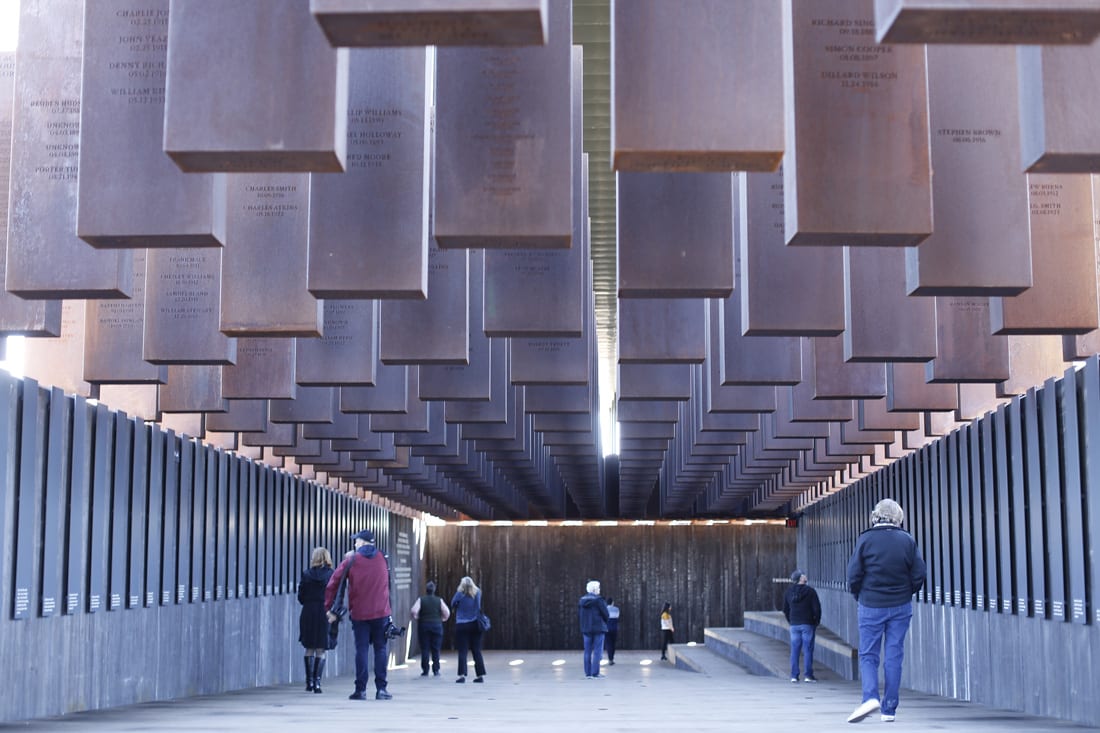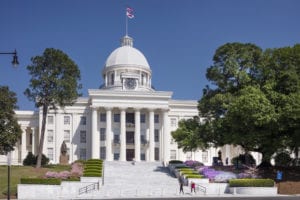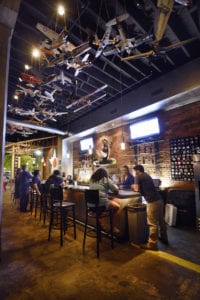Alabama’s capital is an ideal place to mark historic milestones

STORY: H.M. Cauley
January is a significant month in civil rights history. And while Georgia has an array of destinations where that past can be explored, one of our neighbors to the west, Alabama, also claims a remarkable number of locations where the fight against oppression took place.

About a two-and-a-half hour drive from Buckhead, the capital city of Montgomery boasts a combination of historic sites and museums that bring the civil rights era to life, making it an ideal destination for a long weekend. First stop: The National Memorial for Peace and Justice, a 6-acre site where sculptures and artworks by African and African American artists pay tribute to those impacted by violence. Its moving centerpiece is a display of 800, 6-foot monuments that represent the many victims of lynching in the U.S.
About a mile from the memorial, The Legacy Museum: From Enslavement to Mass Incarceration sits on the site of an old warehouse in an area that was once the center of the city’s slave trade. The museum uses a variety of media to immerse visitors in that experience, as well as to examine what life was like under the Jim Crow laws that segregated Southern society until the civil rights movement of the 1960s.
One of the buildings dominating Montgomery’s architectural landscape is the Greek Revival state capitol, a National Historic Landmark perched on a hill overlooking the city since 1851.

The rotunda’s three-level spiral staircases below the domed ceiling are the work of African American carpenter Horace King. The building has been dubbed “the birthplace of the Confederacy” since it was here in 1861 that the articles of confederation were drafted and Jefferson Davis was sworn in as president. History was made on the steps there in 1965 when the Reverend Martin Luther King Jr. delivered his “How Long, Not Long” speech that concluded the famous march from Selma. King’s presence is also felt at the Dexter Avenue King Memorial Baptist Church, where he led the congregation from 1954 until 1960. Nearby, the 1912 parsonage where King lived is now a museum furnished with many pieces that belong to the family. Around the corner is the city’s Civil Rights Memorial, designed by Maya Lin, the architect of the Vietnam Veterans Memorial in D.C.
Montgomery also played a key role in the journeys of the Freedom Riders, volunteers who traveled across the South to challenge segregation on buses and at bus stations. A former depot now serves as the Freedom Rides Museum, where visitors can explore the mission and dangers embraced by the riders.
The Rosa Parks Museum, located on the Troy University campus, shines a light on the heroism of the civil rights icon and those involved in the 1955 Montgomery bus boycott.

Studying such serious history is sure to work up an appetite. Refresh with drinks at the Aviator Bar, where airplane models dangle overhead and vintage posters adorn the walls. Take in scenic views of the Alabama River while dining on seafood at the Capitol Oyster Bar, where on Sunday nights the food is accompanied by live blues bands. Grab a coffee at Prevail Union, tucked into a renovated 1920s building, and save room for a meat-and-three meal at Derk’s Filet & Vine Market, where at least 17 sides are on the menu.
When it’s time to turn in, keep the historic theme going with a stay at The Lattice Inn, a 1906 cottage with just four guestrooms in the heart of the city’s Garden District.
MONTGOMERY, ALABAMA
visitingmontgomery.com
Atlanta-based writer and editor contributing to a number of local and state-wide publications. Instructor in Georgia State’s Communication department and Emory’s Continuing Education division.











